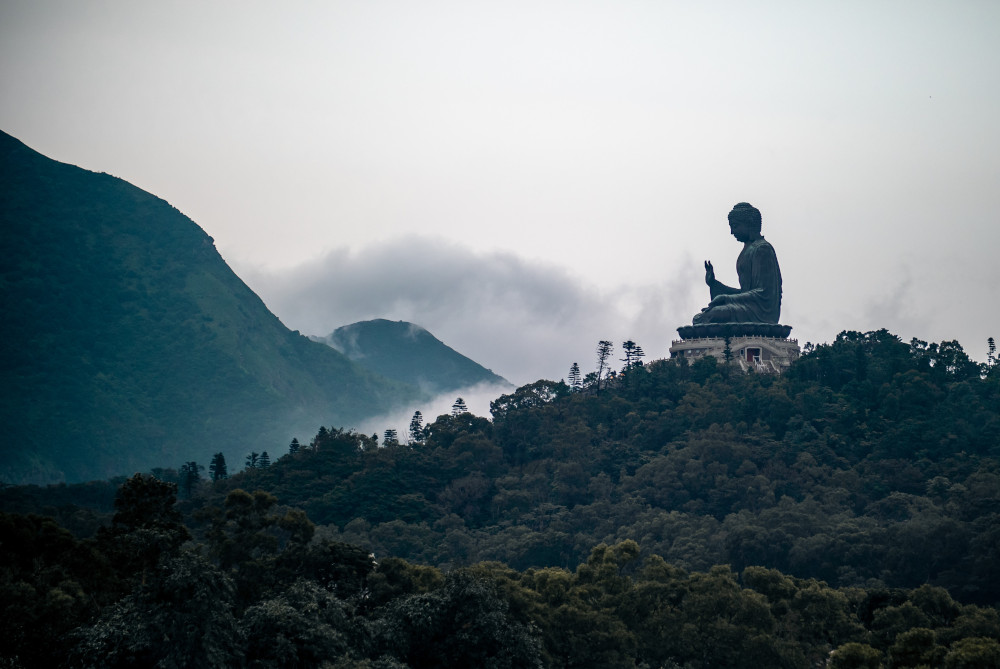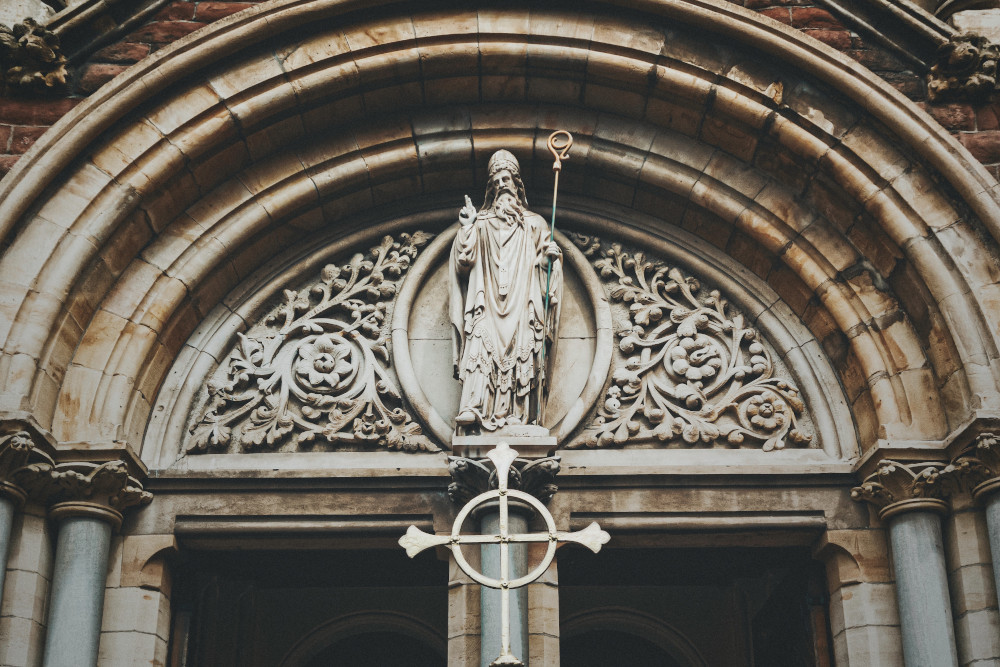
(Jamie Street/Unsplash)
At first glance, the only thing that the Buddha and St. Patrick seem to have in common is the way they are often degraded into kitsch, cartoonish baby monks and dancing leprechauns that bear little resemblance to their intense asceticism.
In fact, the congruence of their spiritual journeys is so striking that you take a second look at the idea of reincarnation: jaded adolescents reborn on the land, deer whose chants radiate compassion into the world even today.
Both Patrick and the Buddha were well-born into power-broking imperial families. Siddhartha, who became the Buddha, or "Awakened One," was the son of a king in Lumbini in what today is northern India. Receiving a prophecy that the boy would either be a sage or a great king, the father sequestered Siddartha in the palace and surrounded him with luxury.
Patrick (his very name, Patricius, means "noble") also grew up in a palace, in his case a large estate in Roman Britain. The specific details of his villa are not known but it probably had servants and slaves, a Roman bath and beautiful art.
In the palace, Patrick rotted from within. "I didn't even care about myself," he remembered in his Confession.
Advertisement
We don't have Siddartha's own words, but he experienced a similar vacuity, at least in the hindsight of his first excursions into the world. Curious, he convinced his servant to sneak him out, where he had successive encounters with the old, the sick and the dead.
The experience left Siddhartha shattered. "And so his heart keeping in the same sad tone, he was as one who returns to a place of entomb-ment; unaffected by any engagement or employment, so he found no rest in anything within his home," wrote Asvaghosha in The Life of Buddha.
Nothing could shake the young Indian prince out of his stupor — girls, parties, music — until finally, he vowed to escape. Siddartha took leave of the palace for the last time, seeking truth as a monk.
Patrick too left the palace, though not by choice. Irish raiders attacked his palace, looting and killing many, and taking captives. They marched Patrick to the coast and across the sea to what some ancients called "The Sacred Island."
Sold to another people, Patrick lived in a liminal space of captivity for six years, his status something between a slave and an adopted relative. His main duty was shepherding and herding.
Siddhartha spent six torturous years in apprenticeship with other spiritual teachers. Extreme fasting left him so thin that he could feel his spine by rubbing his belly and so weak he nearly drowned crossing a river.
It is here that the spiritual journeys of Patrick and the Buddha converge. From what we can best tell, both eschew human guidance and surrender themselves to the land. Siddhartha sat down under a Bodhi tree and vowed not to get up until attaining enlightenment.

A statue of St. Patrick above the entrance to St. Patrick's Roman Catholic Church in Belfast's Cathedral Quarter in County Antrim (K. Mitch Hodge/Unsplash)
Patrick, for his part, prayed unceasingly in the remote hills of Ireland. "I would get up each morning before sunrise to pray, through snow and frost and rain." The hundred prayers at a time transformed him: "I see now looking back that my spirit was bursting inside me."
They both returned home to great fanfare, though at different stages in life. His family thought Patrick was back "as if from the dead" and implored him to never leave again. The scene at the Buddha's home was even more intense. "'Siddhârtha! fully enlightened!" they called out, "has come back again!'"
"The news flying quickly in and out of doors, the great and small came forth to see him; Every door and every window crowded, climbing on shoulders, bending down the eyes, they gazed … [and] wept (for gladness)," Asvaghosha wrote.
Neither could stay. The Buddha soon left, endlessly crisscrossing northern Indian as he spread the Dharma. Through a vision, Patrick's Irish relatives called him back and he spent the rest of his life traipsing the paths that connected the tribes and preaching the Gospel. Both transformed whole regions; the endless road their only homes.
But the most striking similarity in their stories is their deer-natures and chants. The Jataka tale of the Pali Canon records the Buddha teaching that in a past life he was a blue-eyed deer adorned with nine jewels who saved a drowning man from a rain swollen river. The man betrayed the deer and led a king and his army, who sought his beautiful coat. The deer's teachings dissolved the conflict and was in a later life reborn as the Buddha.
It is here that the spiritual journeys of Patrick and the Buddha converge. From what we can best tell, both eschew human guidance and surrender themselves to the land.
In Christian lore, Patrick became the deer when he first returned to Ireland. After lighting the paschal fire in defiance of the tribal chieftain, he sang his protection song, often called "The Deer's Cry," and became a deer, binding himself to all the powers of creation and culminating in Christ:
Christ with me, Christ before me,
Christ behind me, Christ within me,
Christ beneath me, Christ above me,
Christ at my right, Christ at my left,
Christ in the fort, Christ in the chariot-seat, Christ in the mighty stern.
The Buddha's great protection song, the Metta Sutta, has the same encircling power given in a similar context of spiritual conflict. A group of monks settled in a forest for a retreat and the spirits tried to drive them away. The Buddha's encouragement wasn't enough so he bestowed on them a paritta protection chant. They made relatives with the spirits, who accepted and even began to protect them.
Radiating kindness over the entire world:
Spreading upwards to the skies,
And downwards to the depths;
Outwards and unbounded,
Freed from hatred and ill-will.
Whether standing or walking, seated or lying down
Catholics might see the Buddha as an "anonymous Christian," someone perfected by God's grace though never having learned of Jesus. Buddhist might see Patrick as a Bodhisattva, one that defers entry into Nirvana to pray for the happiness of all living beings.
I'll leave that debate to the side, for in them both I see the Deer: the essence of the spiritual journey and its connection to land, radiating compassion above, below, and all around.








